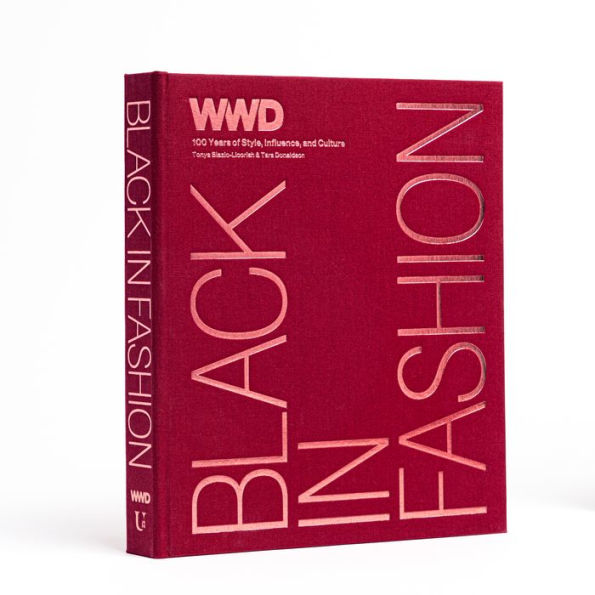
Black in Fashion: 100 Years of Style, Influence & Culture
304
Black in Fashion: 100 Years of Style, Influence & Culture
304Hardcover
-
SHIP THIS ITEMAvailable for Pre-Order. This item will be available on September 3, 2024PICK UP IN STORE
Store Pickup available after publication date.
Available within 2 business hours
Related collections and offers
Overview

Product Details
| ISBN-13: | 9781454952060 |
|---|---|
| Publisher: | Union Square & Co. |
| Publication date: | 09/03/2024 |
| Pages: | 304 |
| Sales rank: | 114,443 |
| Product dimensions: | 9.75(w) x 11.50(h) x (d) |
About the Author
Read an Excerpt
TABLE OF CONTENTS Foreword IntroductionCHAPTER 1. 1910s–1920s PRELUDE TO INFLUENCE: WWD’s coverage creates a unique juncture to connect and celebrate the contributions of Black creatives, entertainers, labor and advocacy, and style. The 1910s and 1920s put a lens on entertainment, where actor Paul Robeson and entertainer Josephine Baker are the talk of the town. Baker will continue to inspire and influence fashion trends for decades to come.CHAPTER 2. 1930s THE GOLDEN AGE OF BLACK CULTURE: Industrialization informs a monumental shift in the evolution of the fashion industry. The 1930s is a decade of innovation in fashion and coincides with the Harlem Renaissance and the golden age of Black culture.CHAPTER 3. 1940s STAGING FASHION: War efforts halt fashion production during the 1940s. Designers will look to the stage and screen for inspiration. Though these opportunities are still not as fruitful for Black performers, participation brings visibility to their influence on fashion. WWD takes note of the trend.CHAPTER 4. 1950s A PATH TO VISIBILITY: As WWII ends, the US retail sector experiences expansion. Black designers remain underrepresented in commercial retail. However, in 1949, NAFAD (National Association of Fashion and Accessories Designers) organizes, changing the commercial viability of Black custom dressmakers and tailors.Chapter 5. 1960s: THE POLITICS OF FASHION: The ’60s sees fashion veiled in the respectability politics of the Civil Rights Movement, then liberated by youthful self-expression. Opportunities in fashion retail supported by affirmative action increase the number of Black professionals in the workforce. WWD dedicates a new column to celebrity culture, the “Eye,” covering the international fashion scene.SECTION 6. 1970s: BLACK IS BEAUTIFUL: Style begins its ascension from the street to the runway. Cultural influences include Diana Ross, disco, the Battle of Versailles, and André Leon Talley. Black influence prevails with the voices of Harry Belafonte, Sidney Poitier, Muhammad Ali, Alvin Ailey, Diahann Caroll, and others, who use fashion to break barriers and stigmas. Stephen Burrows leads a pack of innovative designers, including Scott Barrie, Willi Smith, and Jeffrey Banks.SECTION 7. 1980s: BLACK IS FASHION: Music and a new wave of artistic expression takes culture from underground to uptown. Willi Smith brings casual cool to American menswear, and Patrick Kelly takes his Southern charm to Paris. WWD captures it in real time as photography takes the place of illustration in the daily. Gordon Henderson becomes the first Black designer to receive the CFDA Perry Ellis Young Designer Award. Oprah Winfrey begins her talk show; the AIDS epidemic changes the industry; and rap music begins to change fashion.SECTION 8. 1990s: MOMENTUM OF CHANGE: A new generation of young designers lead the fashion industry. CD Greene, Byron Lars, Tracy Reese, and Kevan Hall, who takes the helm at Halston—the first Black designer appointment to an American heritage brand. Young entrepreneurs create a multibillion-dollar category inspired by the streets.SECTION 9. 2000s: STREET STYLE TAKE-OVER: Celebrities are the new brands. Kimora Lee Simmons and Sean Combs bring “urban” fashion to the runway. Ozwald Boateng is at Givenchy Menswear, Olivier Rousteing at Balmain, and Virgil Abloh at LVMH. Barack Obama is elected the first Black president, and Michele Obama, the first Black First Lady, supports the American fashion industry. The beauty business explodes, with Rihanna leading the charge.SECTION 10. 2020s: MOVING THE CONVERSATION FORWARD: Fashion has a reckoning, like the rest of the world. Black Lives Matter and the pandemic question the industry’s lack of diversity, inclusion, and equity. Interviews will complete this section alongside photography.











